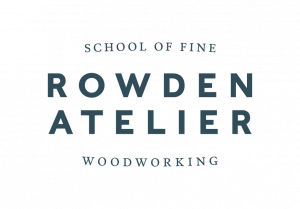A straight edge means a flat surface
There is something of an obsession at Rowden about the use of straight edges. If I’m honest, there’s something of an obsession about just about everything to do with making here, which is as it should be. But the straight edge tool is an implement that is used pretty much every day by the students.
From week one, if not day one, correct usage of the straight edge is the foundation of accurate surfacing. The very first thing everyone makes, whether they are here for a week or a year, is a cross halving joint. The cross halving joint is made from a stick of wood. And the first thing that happens to that stick is a flat surface is created on one side.
Flat surface, one side. Rowden obsessions. Let’s call it 4 hours work for a new student… on a good day!
Check your tolerances
Because we talk about 0.1mm tolerances at Rowden, this includes all surfaces, faces and edges. It is no use buying a cheap straight edge if their tolerance is above that. We like the ones from Axminster. We love the ones from Starrett. Other straight edges are available of course.
The Starrett, for example, has an engineered, bevelled edge. When you hold it up, on top of a planed surface with a light source behind, any discrepancy over a half a tenth shows up as light streaming through. It is amazingly accurate and amazingly reliable. Draw the edge over the surface and you can watch the light dancing across the surface as lows are highlighted. If the piece is dead flat, within that magical 0.1mm tolerance, the light can be seen to track through the grain of the wood with ark lines seeming to drop down between the steel edge and the wood. That’s when you know you’ve cracked it.
Something we have noticed time and again is how quickly the student’s eye is trained to search out imperfection. Day one and two we almost throw the piece back at the student for the yawning (like 0.15mm) gaps. By day three they will come to John and say,”Can you check, I don’t think it’s good enough” and lo and behold the light coming through is coming through a gap under 0.1mm!
And how do we know? John has a set of feeler gauges that go down to 0.1mm, and that gauge simply won’t go through the gap!
Such a simple tool, used correctly, is so much more than a measuring device. It becomes an educating device, and very quickly becomes indispensable.
Until next time,
Lakshmi
